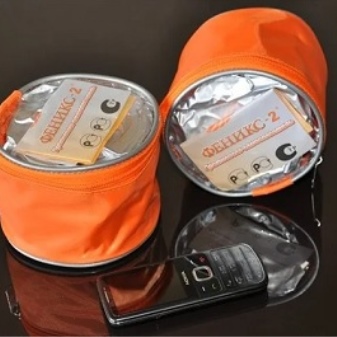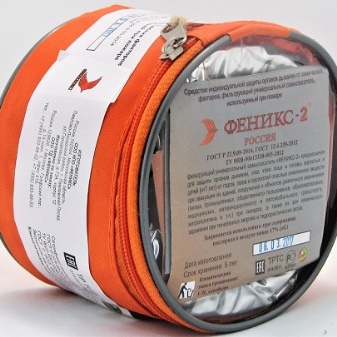Features of self-rescuers "Phoenix"

Self-rescuers are special personal protective equipment for the respiratory system. They are designed for quick self-evacuation from dangerous places of possible poisoning with harmful substances. Today we will talk about the features of self-rescuers from the Phoenix manufacturer.


General characteristics
These means of protection can be:
- insulating;
- filtering;
- gas masks.
Insulating models are considered a common option. Their purpose is to completely isolate a person from a dangerous external environment. These samples are available with a compressed air compartment. The next type is filter self-rescuers. They are available with a special combination filter. It allows us to purify those streams of air that enter our respiratory organs. When exhaled, air is released into the environment.


Today, universal small-sized protective equipment with a filter element is also produced. Such protective equipment can be in the form of a durable hood, which is used to protect against harmful vapors, aerosols, and chemicals. They are produced with a special box and an aerosol filter. There is always a small clip on the nose on the hood so that the person breathes only through the mouthpiece and so that condensation does not form during breathing.
The self-rescuer-gas mask is most often used in case of fire. He will be able to help only when the oxygen content in the air is at least 17%. Such gas masks are made with spectacle lenses. The filter box of the product, as a rule, can be connected to the front sector. When choosing a protective product, look at its main characteristics.
Pay attention to which hazardous substances the product can be used for. Most of them should protect against such dangerous for humans compounds as chlorine, benzene, chloride, fluoride or hydrogen bromide, ammonia, acetonitrile.


Each specific self-rescuer "Phoenix" has its own meaning of continuous action. Many models are capable of functioning for 60 minutes. Most of these products from this manufacturer are relatively compact in size and low in total weight. In addition, these respiratory protection products have some age restrictions. Many models of hoods can be used by adults and children over seven years old.
All self-rescuers are made of high quality and most durable materials that will not burn or melt in a fire. Non-flammable elastic rubber is often used for this.
A silicone base can be used to create individual elements (nose clip, mouthpiece).

Device and principle of operation
The design features of various models may differ from each other depending on their type and purpose. So, hoods are created with a large transparent mask. Most often, a polyimide film is taken for its manufacture. In addition, some types have a silicone mouthpiece, a nose clip, and are equipped with elastic seals that are worn around the neck. Almost all varieties are made with a filter element. Some samples use a sealed collar filter, an aerosol cleaning element with a spring.
The work process for each individual model is also different. Filtering products function due to the constant supply of polluted air streams from the environment. First, they pass through a filter element with a catalyst, subsequently converting to carbon dioxide. A special adsorbent destroys all secretions harmful to humans. The purified air enters the respiratory system.


In insulating self-rescuers, air flows from the external environment are not used. They are powered by compressed air, which is supplied from a small compartment, or by chemically bound oxygen. In units based on chemically bound oxygen, the respiratory mass with exhalation through a special corrugated part enters the cartridge, on which carbon dioxide and unnecessary moisture are destroyed, after which the process of oxygen generation begins.
From the cartridge, the mixture enters the breathing bag. When inhaling, the respiratory mass saturated with oxygen is re-sent to the cartridge, where it is further purified again. After that, the mixture enters the human body. In devices with an oxygen compartment, the entire supply of clean air is kept in a special compartment. When you exhale, the mixture is discharged directly into the external environment.


User manual
Together with each self-rescuer "Phoenix" in one set, there is also a detailed instruction for use. To put on the self-contained self-rescuer, first stretch it carefully. The product is put on from top to bottom so that the mask completely covers the person's nose and mouth.
The headband straps are tightened tightly until the mask is quite tight, all hair is carefully tucked under the collar of the protective equipment. At the end, you need to start the trigger for the release of oxygen.


Shelf life
When choosing a suitable self-rescuer, be sure to look at its expiration date. Most often, it is five years, taking into account its storage in a standard vacuum box, which comes in one set with the product itself.
In the next video you will find a test drive of the Phoenix-2 self-rescuer gas mask.











The comment was sent successfully.